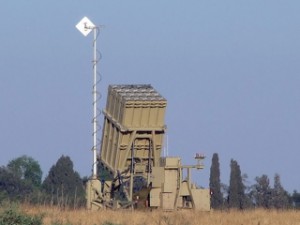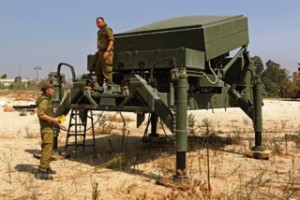
By Marney Blom
From the fray of escalated rocket fire over Israel, during the month of March, arose an unlikely hero – the Iron Dome Defense system. Poised three metres high and weighing only 90 kilos, the mobile Israeli-manufactured defense solution successfully detonated 90 percent of all incoming rockets from the Gaza Strip.
The cost of the system, however, was daunting at the outset. The fact that each Iron Dome interceptor costs from $50,000 to $100,000, and an average of two interceptors is required for each incoming missile threat, originally brought the feasibility of it’s production into question. Residents of the southern communities of Ashkelon, Ashdod, Be’er Sheva, Kiryat Malachi and Netivot quickly dispelled such reservations, however, when they witnessed the system’s effective mid-air interception of almost 60 grad rockets intended for Israeli civilian populations in these areas,, during the recent post-Purim (festival of Esther) week of escalated rocket attack.
The Iron Dome – a trophy of Israeli ingenuity originated from lessons learned during the Second Lebanon War of 2006. As a result of the successful penetration of 6000 rockets into Israel, the Israeli government realized it needed to development its own homegrown anti-missile defense system.
Completed in only three and a half years by Israel’s Rafael Advance Defense Systems Ltd, the Iron Dome battery functions in all weather conditions including low clouds, rain, dust storms and fog. It is built to destroy incoming enemy missiles from short-range rockets to 155 millimeter artillery shells at ranges of up to 70 kilometers. Its radar tracking system detects and identifies the rocket or artillery shell launch and analyzes the trajectory’s threat by estimating where it will make contact on the ground. Once it has deemed the incoming projectile as posing a critical threat, the system’s unique interceptor shoots it down by detonating its warhead over “neutral territory,” or a non-civilian area..

Now, a year since its first successful interception – an incoming grad rocket from Gaza headed for Be’er Sheva on April 7, 2011 – Israel’s defense shield has eliminated almost 100 grad and kassam rockets. While these statistics are impressive, greater coverage is required to protect the entire country.
On the ground today, there are three Iron Dome batteries positioned in southern Israel, and a fourth recently placed in Gush Dan in central Israel. However, as Israel hones its defense systems, Hamas continues to develop its rocket and missile range capabilities. Incoming rockets are increasingly able to penetrate deeper into central Israel. Since one battery can only defend an area approximately the size of an average Israeli city, defense officials maintain that a total of 13 are needed to blanket the entire nation – Israel’s ultimate objective. The IDF hopes to have seven Iron Dome batteries in operation throughout Israel by the end of the year.
To view related video, click here.
Marney Blom is news director for the Acts News Network.
Copyright © Acts News Network, Inc.
